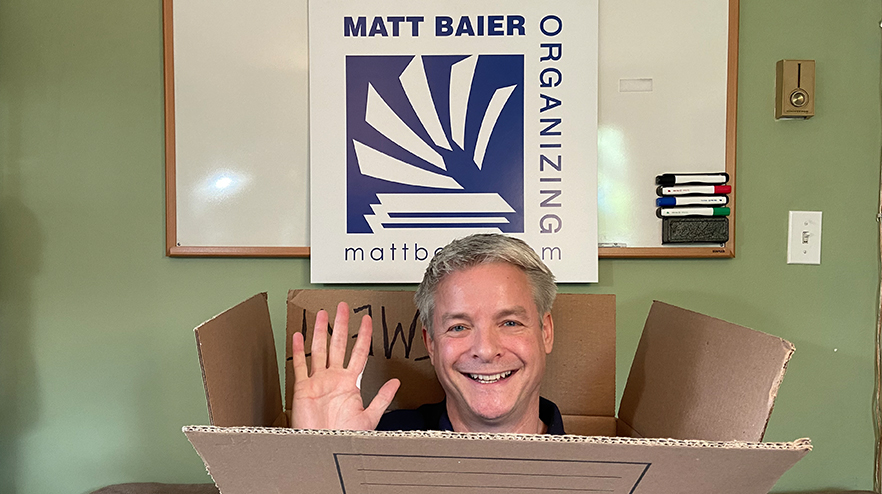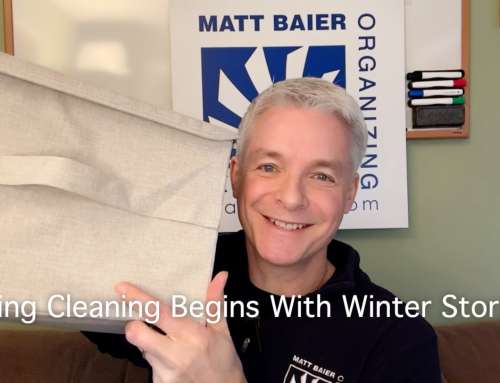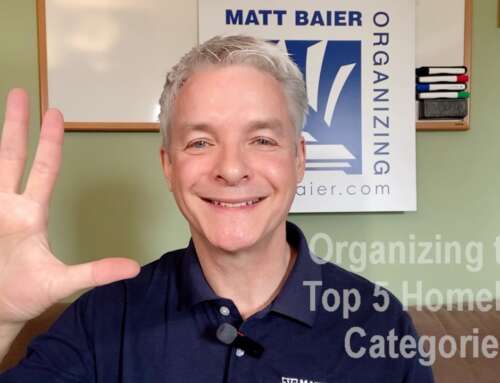Last post I addressed Organizing A Move, so in this one we look at Organizing An Unpack. Moving into a new home is an exciting time, but can also be a very stressful time. Having a well organized plan can reduce the unnecessary stress. Here are 5 tips to help.
1. Establish an exit zone
Before you start diving into boxes, dedicate a spot to collect discards. Usually a section of the garage makes sense. Make sure your family and the movers are all on the same page. You’ll be surprised how quickly you start running out of space inside your new home. So be sure these boxes are heading OUT. By the way I find it more space efficient to collect boxes in other boxes. So before you flatten them all, leave a few open to hold the flattened boxes vertically.
2. Choose a processing area
As I said, space will start evaporating. So it’s important to keep the pathways open, so the movers can flow in and out quickly. Try to isolate your unpacking efforts to one area at a time and establish a processing area. Hopefully you will have brought a small quantity of your bare essentials with you in your car. That way you don’t need to access every room at once.
A processing area should consist of a clear work surface. It might be a while before the dining table is unloaded and assembled, so I have a recommendation. Keep a couple folding tables handy.
Also, try to keep the packed boxes on one side and the unpacked items on the other side. Unpacked items should be sorted by general categories for distribution. Of course you know the deal with the empty boxes. Get them on the way to the exit zone.
3. Set up a Command Central
It will be a while before you work out the ideal locations for everything, so immediately establish a command central. This is a surface to concentrate your most vital information and tools. The kitchen counter may seem like an obvious candidate for this, but bear this in mind. A LOT of unpacking will need to happen there and vital tools can get lost easily. All it takes is the cover of a piece of wrapping paper, followed by a distraction. Distraction is common during a move and you can lose important things. So keep them in one place away from the action.
Remember I recommended two folding tables? If you don’t have a desk in your kitchen, you might want to set up a command central table. Keep it separate from the processing surface. Get clear on this one central location with your family and emphasize the importance of returning tools here.
4. Showroom vs. Stockroom
This is concept from my book The Circulation Solution, which is useful to keep in mind as you unpack. Here’s the concept. A showroom space is open, well-lit, inviting. There is a limited amount of inventory, mostly below eye level, and a lot of activity.
Whereas In the stockroom space it’s a different story. You worry less about what it looks like and you can take more advantage of vertical space. That way you can fit more in, but there is less activity.
There are showroom and stockroom spaces in the home as well. Now may be the perfect time to rethink the showroom and stockroom contents from your last home. This is especially likely if you are downsizing. Maybe you had room for archive files in your last home office (showroom space), but not now. Given that you now have more basement storage (stockroom space) perhaps they can live in the basement now.
Other examples of items that may merit stockroom storage are seasonal clothes, entertainment items, keepsakes, holiday items, and luggage. Running out of space in your new home office, bedroom, kitchen, and living room as you unpack? Then consider which familiar showroom items could work as stockroom items. This depends on whether you can trust that you could find these items reliably.
5. Momentum Trumps perfection
Unpacking is a big project that needs to happen in a short amount of time. So it is critical that you stay focused on it, but of course distractions are inevitable. Recognize this and create a plan for them. The easiest plan I have found is to pull my phone out when an idea pops into my head. I dictate the idea into a note page. It’s amazing the distractions I can avoid this way. I simply capture something I don’t want to forget in a safe place. It’s a system I trust because entry and retrieval are so easy.
Moving in can be a rather frantic time. Your attention can be pulled in many different directions at once. By planning on these 5 tips in advance you can take these challenges out of your head. That way you can give more focus to the random emerging challenges of settling in.













Leave A Comment